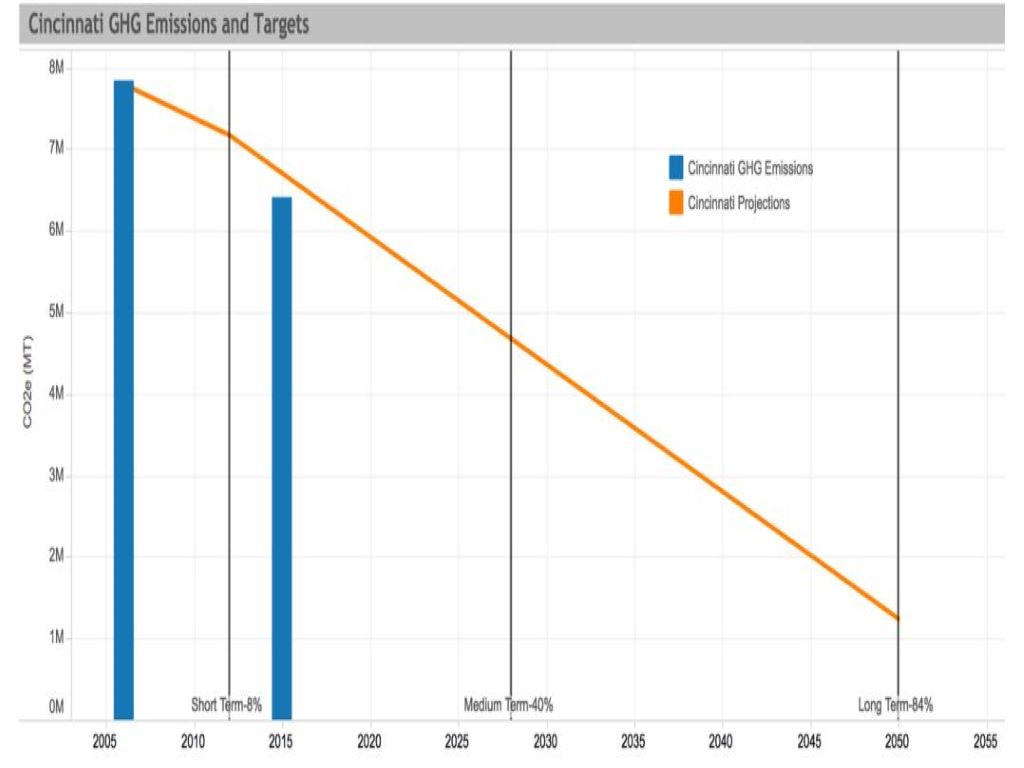Implementation
The processes for measuring city government and community-wide emissions are different. The steps for each method are clearly articulated in nationally and internationally developed protocols. The community calculator used in ClearPath is based on the Global Protocol for Community-Scale Greenhouse Gas Emission Inventories, and the municipal calculator is based on the Local Government Operations Protocol.
The City of Cincinnati selected ClearPath to complete their inventories because of the tool’s reputation for being a leading greenhouse gas profile platform, because ICLEI offers technical assistance during the inventory process and because the tool is widely used by other municipalities, which makes comparing data between communities easier.
Cincinnati’s local government inventory included emissions generated from municipal operations, including fuels consumed by the vehicle fleet, aviation fuel use and energy used in water and waste water treatment, city building and facilities operations, streetlights and traffic signals.
Cincinnati’s community-wide inventory included emissions generated by electricity and natural gas consumption, motor vehicle transportation and solid waste decomposition from commercial, industrial and residential operations.
Cincinnati obtained the data necessary to complete each inventory from a variety of local contacts, including local utilities, city and county government departments, regional transit authorities, airport authorities, the water and sewer districts, the landfill and more. As with any data collection effort, following the initial data requests, staff spent a significant amount of time answering questions, issuing reminders and waiting for responses. Staff completed the calculations and analysis in ClearPath as the data were received.
A full review of methods is available in the 2015 Cincinnati Greenhouse Gas Inventory and Analysis report.
Timeline
The 2015 Cincinnati Greenhouse Gas Inventory took roughly six months to complete.
Funding Source
Using departmental discretionary funds, the City of Cincinnati’s Office of Environment and Sustainability purchased an annual ICLEI membership to gain access to ClearPath. ICLEI membership fees vary by population size. With a population of 300,000, Cincinnati’s membership cost $2,750. Since the inventory was completed in-house and not by an external consultant, the City also supported the project through the salary of one full-time staff member who worked on the inventory, along with other tasks, over a six month period.



